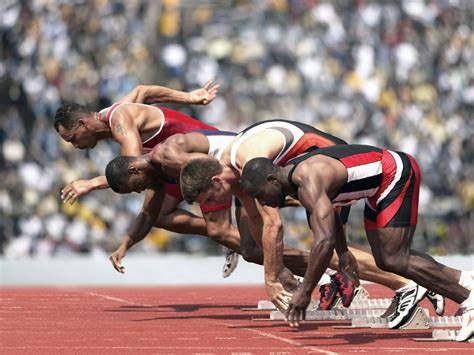What tactical workout changes prevent plateaus & ensure peak strength performance?

Conquering the Frustrating Strength Plateau
Every dedicated strength athlete eventually encounters the dreaded strength plateau. That moment when your lifts stall, progress grinds to a halt, and motivation wanes. It’s a natural part of the training process, but it doesn’t have to be a permanent roadblock. To continuously challenge your body, prevent stagnation, and ensure you’re always striving for peak strength performance, tactical adjustments to your workout regimen are not just beneficial – they are essential.
Understanding why plateaus occur is the first step. They can stem from various factors, including the body’s adaptation to a consistent stimulus, central nervous system fatigue, insufficient recovery, or simply a lack of varied stress. Overcoming them requires a strategic approach, moving beyond simply trying to push through with the same methods that are no longer yielding results.

The Cornerstone: Evolving Progressive Overload
While progressive overload is the fundamental principle of strength training, its application needs to evolve. Simply adding more weight indefinitely isn’t sustainable. Tactical changes involve varying how you apply this principle:
- Increase Reps & Sets: Instead of heavier weight, try to perform more repetitions with your current weight, or add another set.
- Decrease Rest Times: Shortening the rest periods between sets can increase the overall intensity and density of your workout.
- Improve Form & Tempo: Focus on perfect technique, increase time under tension (slower eccentrics, pauses), or incorporate advanced techniques like drop sets or supersets.
- Increase Training Frequency: Train a muscle group more often, allowing for more exposure to the stimulus across the week.
Strategic Periodization: The Master Plan
Periodization is the systematic planning of training, organizing it into phases or cycles to manage training stress, optimize performance, and prevent overtraining. Instead of linear progression, where you constantly try to lift heavier, periodization involves varying intensity, volume, and exercise selection over time:
- Linear Periodization: Gradually increases intensity while decreasing volume over a macrocycle.
- Undulating Periodization (Daily/Weekly): Varies intensity and volume more frequently (e.g., heavy day, moderate day, light day within a week). This keeps the body guessing and prevents adaptation to a single type of stress.
- Block Periodization: Focuses on specific qualities (hypertrophy, strength, power) in distinct blocks before peaking.
Implementing periodization means you won’t always be chasing personal bests, but the strategic ebbs and flows will prime your body for higher peaks.

The Importance of Deload Weeks
Often overlooked, deload weeks are a crucial tactical change to prevent plateaus and ensure long-term progress. A deload involves intentionally reducing training volume and/or intensity for a short period (typically 1 week). Its purpose is multifaceted:
- Physical Recovery: Allows connective tissues, joints, and muscles to fully recover and repair.
- Mental Recuperation: Reduces mental fatigue and burnout.
- Resensitization: Helps the body become more responsive to training stimuli again, making subsequent training cycles more effective.
Deloads aren’t a sign of weakness; they’re a smart strategy for sustained peak performance and injury prevention.
Exercise Variation & Accessory Work
Sticking to the same 3-5 exercises for years can lead to adaptation and neglect of supporting muscle groups. Tactical variation includes:
- Swapping Main Lifts: Temporarily replace a barbell back squat with a front squat, pause squat, or safety bar squat. Bench press could become a dumbbell press, floor press, or incline press.
- Targeting Weak Links: Identify muscles or movement patterns that are lagging and incorporate specific accessory exercises to strengthen them. For example, if your deadlift stalls, focus on glute-ham raises, good mornings, or paused deadlifts.
- Unilateral Training: Incorporate single-limb exercises (e.g., lunges, single-leg RDLs, dumbbell rows) to address muscular imbalances and improve stability.

Beyond the Gym: Nutrition, Hydration & Recovery
No amount of tactical gym changes will yield peak performance if your foundation is weak. Strategic adjustments outside of training are equally vital:
- Optimized Nutrition: Ensure adequate caloric intake to support muscle growth and recovery, sufficient protein for repair, and a balanced intake of carbohydrates and healthy fats. Micronutrients are also key for overall bodily function.
- Hydration: Dehydration significantly impairs performance and recovery. Consistent, adequate water intake is non-negotiable.
- Prioritize Sleep: Most muscle repair and hormone regulation happen during sleep. Aim for 7-9 hours of quality sleep per night.
- Stress Management: Chronic stress (physical or mental) can elevate cortisol levels, hindering recovery and progress. Incorporate stress-reducing activities like meditation, yoga, or spending time in nature.

Integrating Strategies for Sustained Progress
Preventing plateaus and ensuring peak strength performance isn’t about implementing one tactical change; it’s about a dynamic, integrated approach. Listen to your body, track your progress meticulously, and be willing to adapt your plan based on feedback. Consistency over time, coupled with intelligent variations, is the true recipe for long-term success in strength training.
By strategically implementing evolving progressive overload, thoughtful periodization, scheduled deloads, intelligent exercise variation, and prioritizing holistic recovery, you can effectively navigate plateaus and continuously push the boundaries of your strength potential. The journey to peak strength is an ongoing conversation with your body; learn to speak its language through tactical training adjustments.









